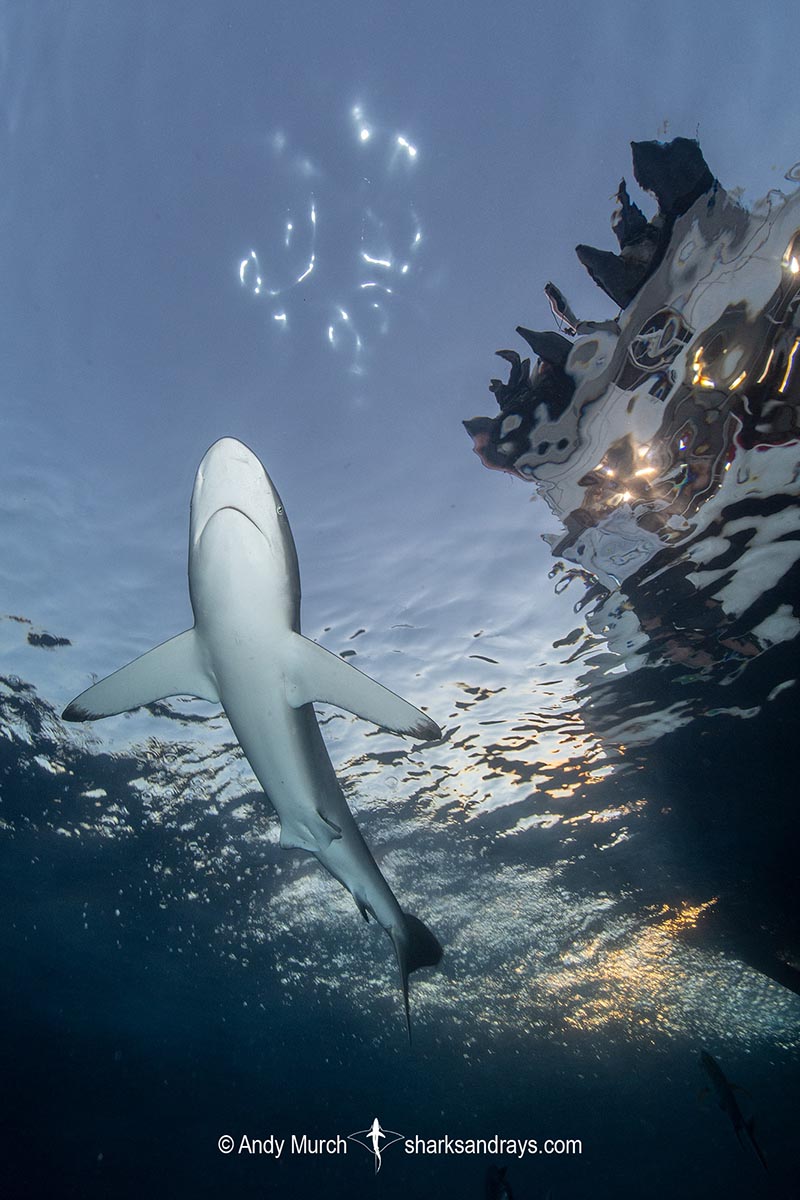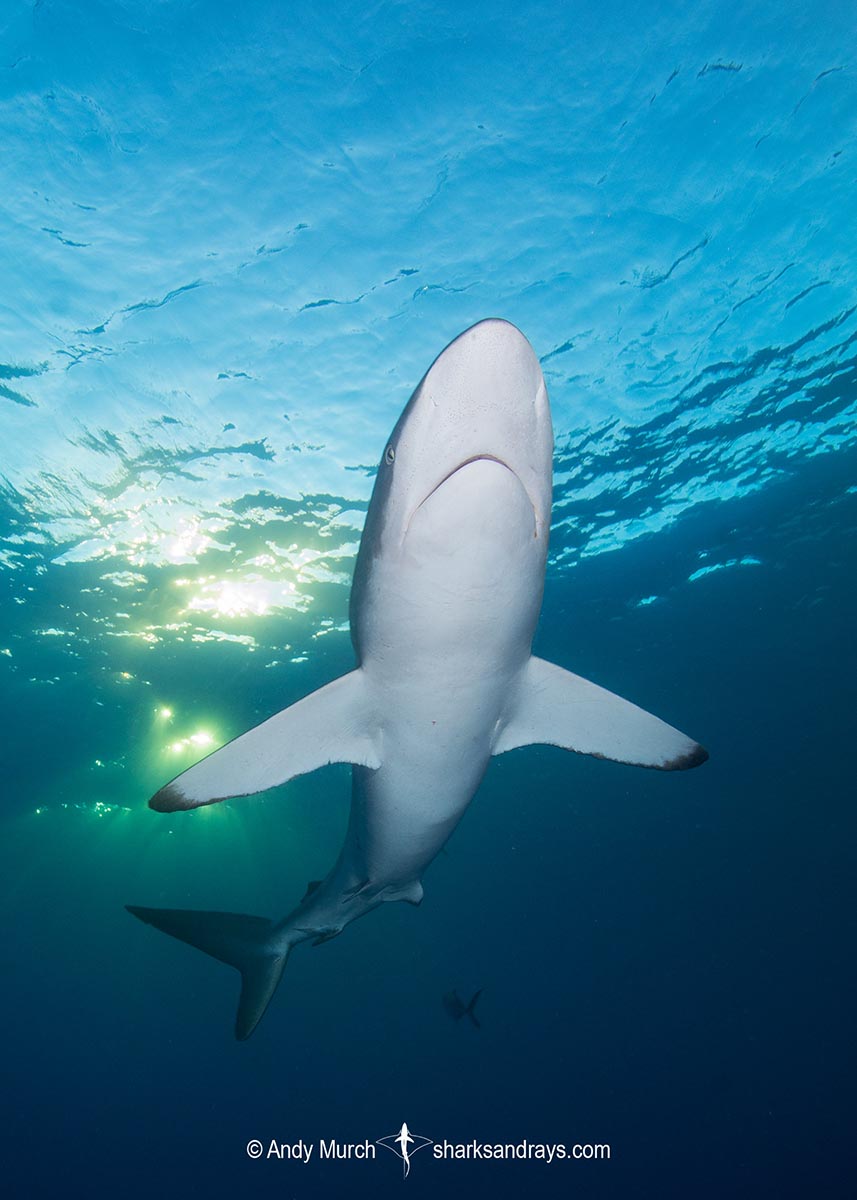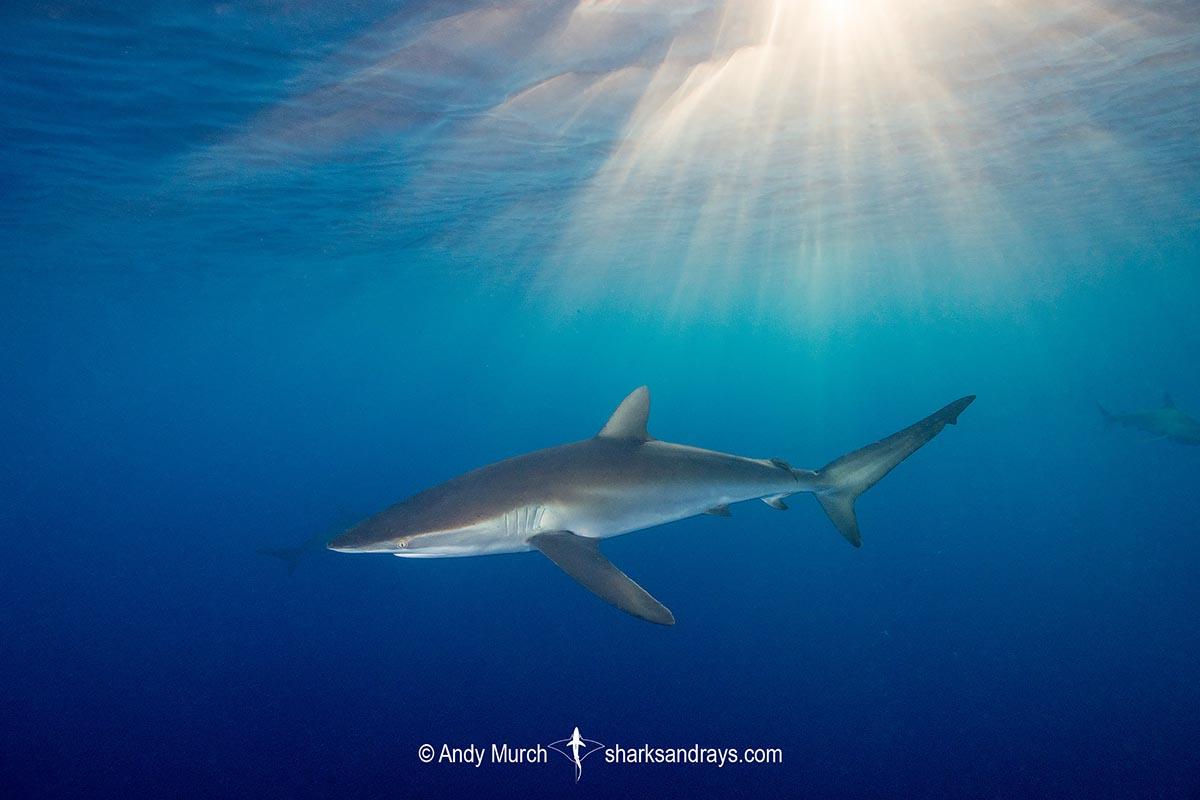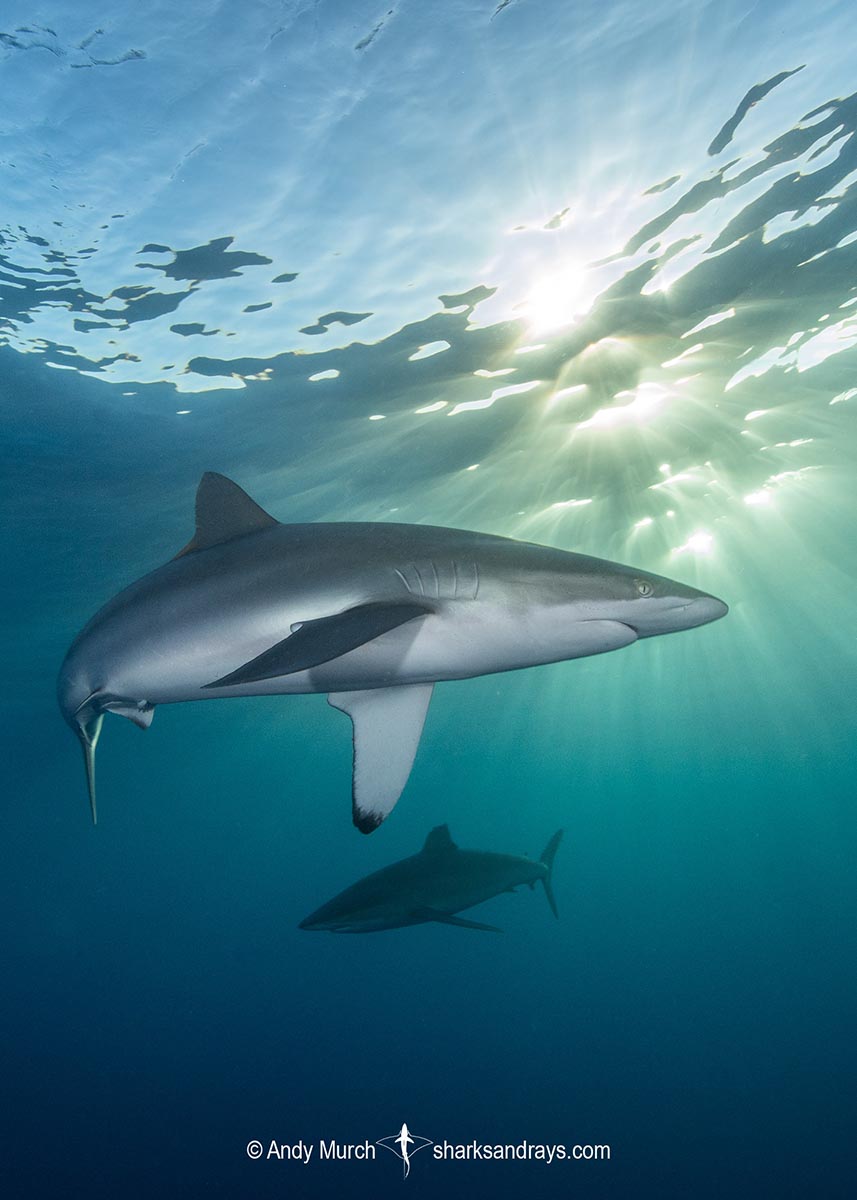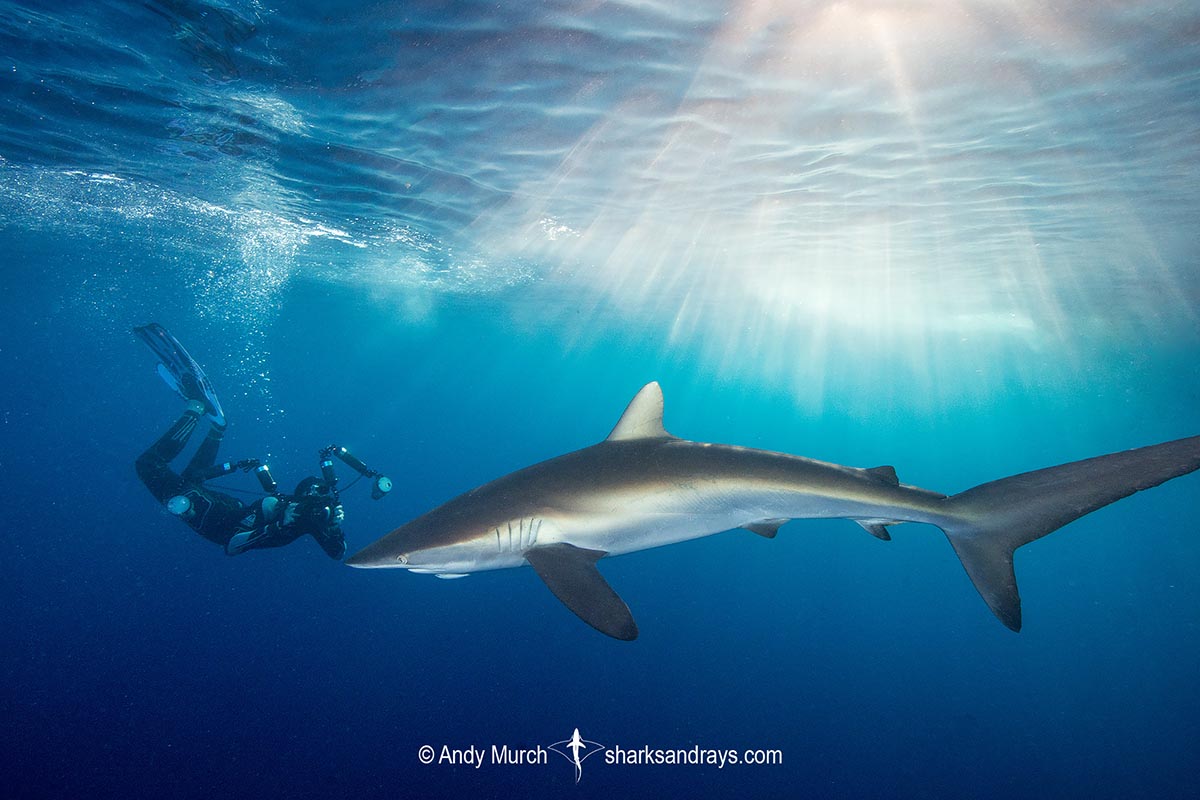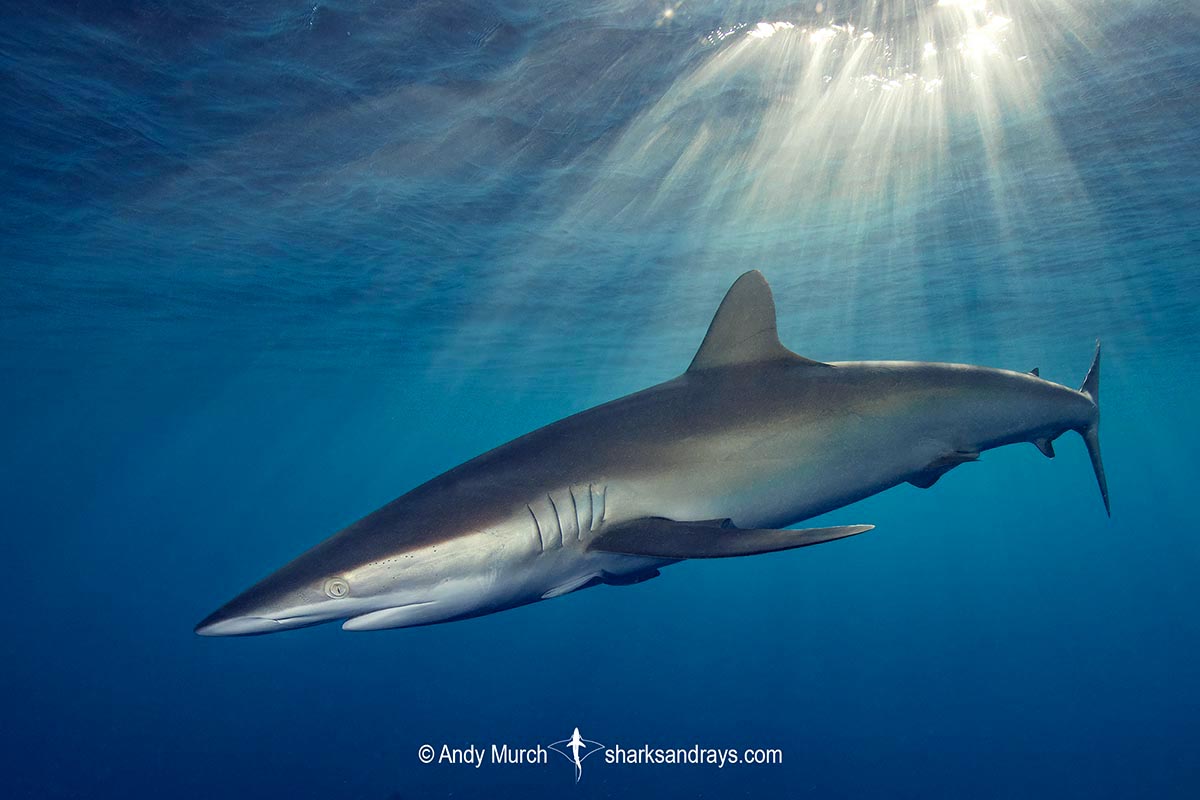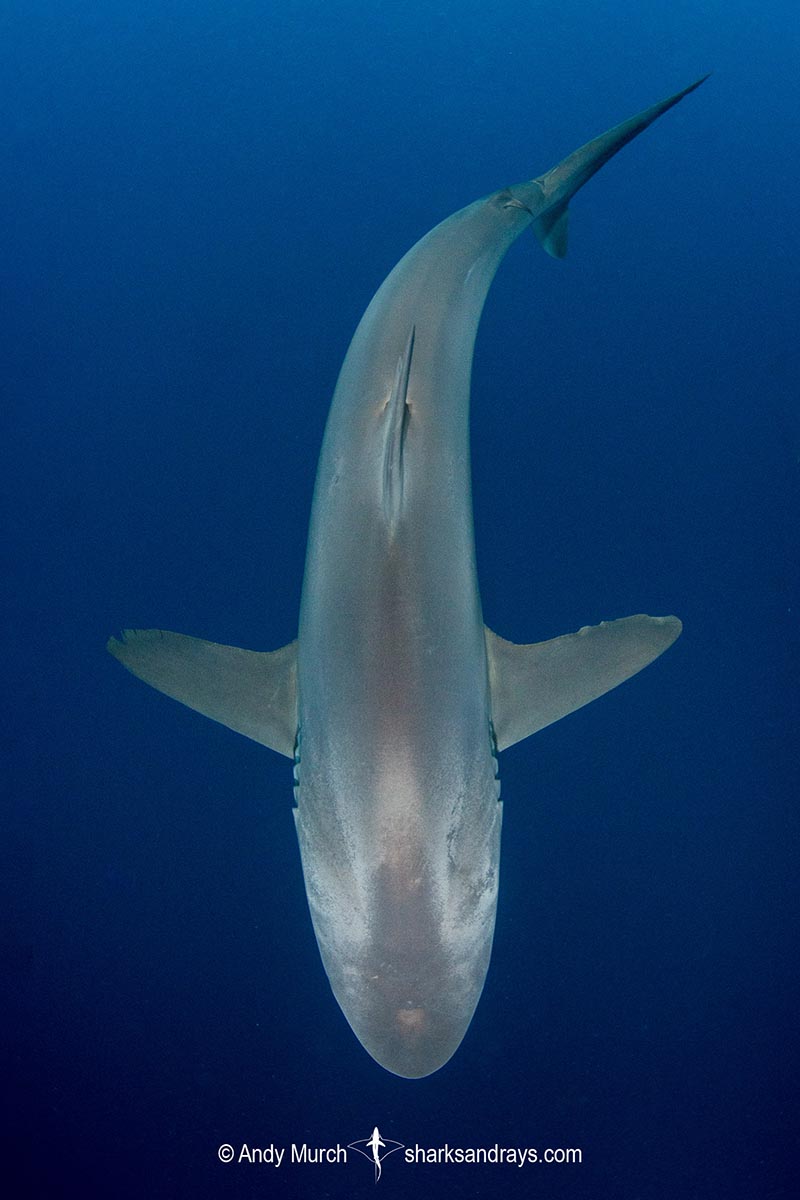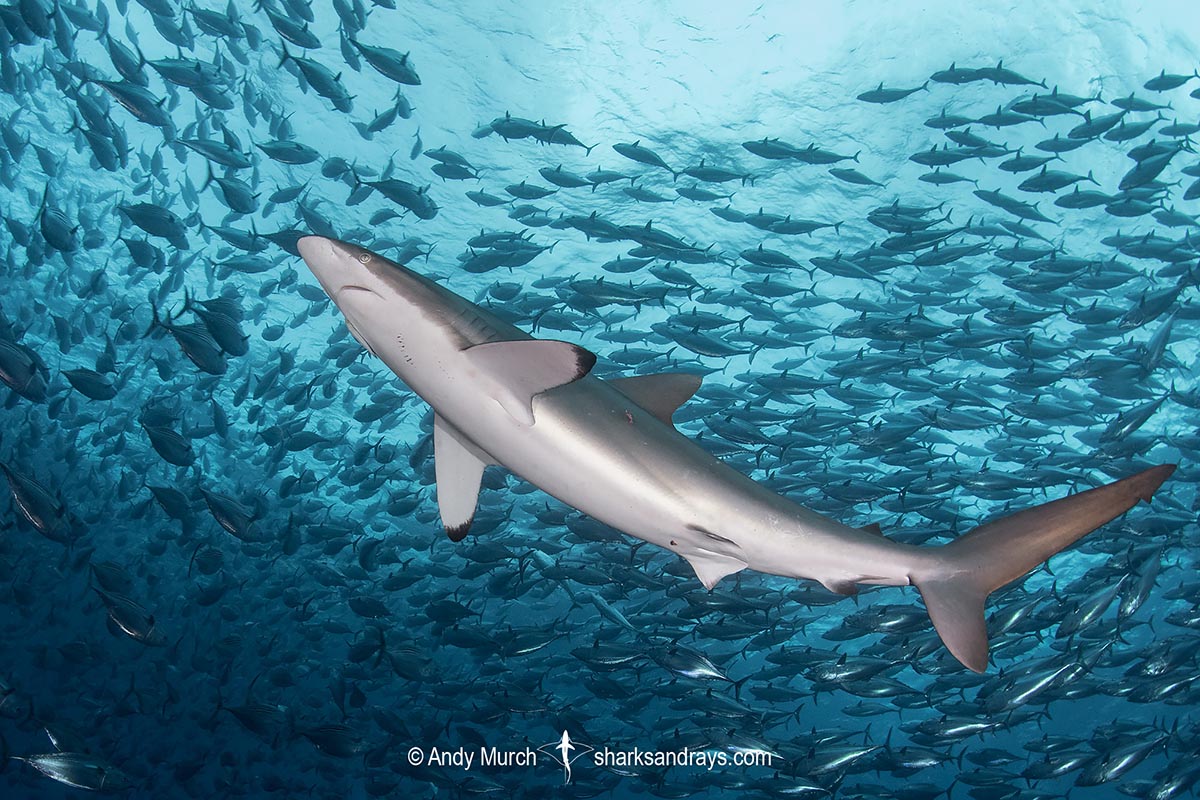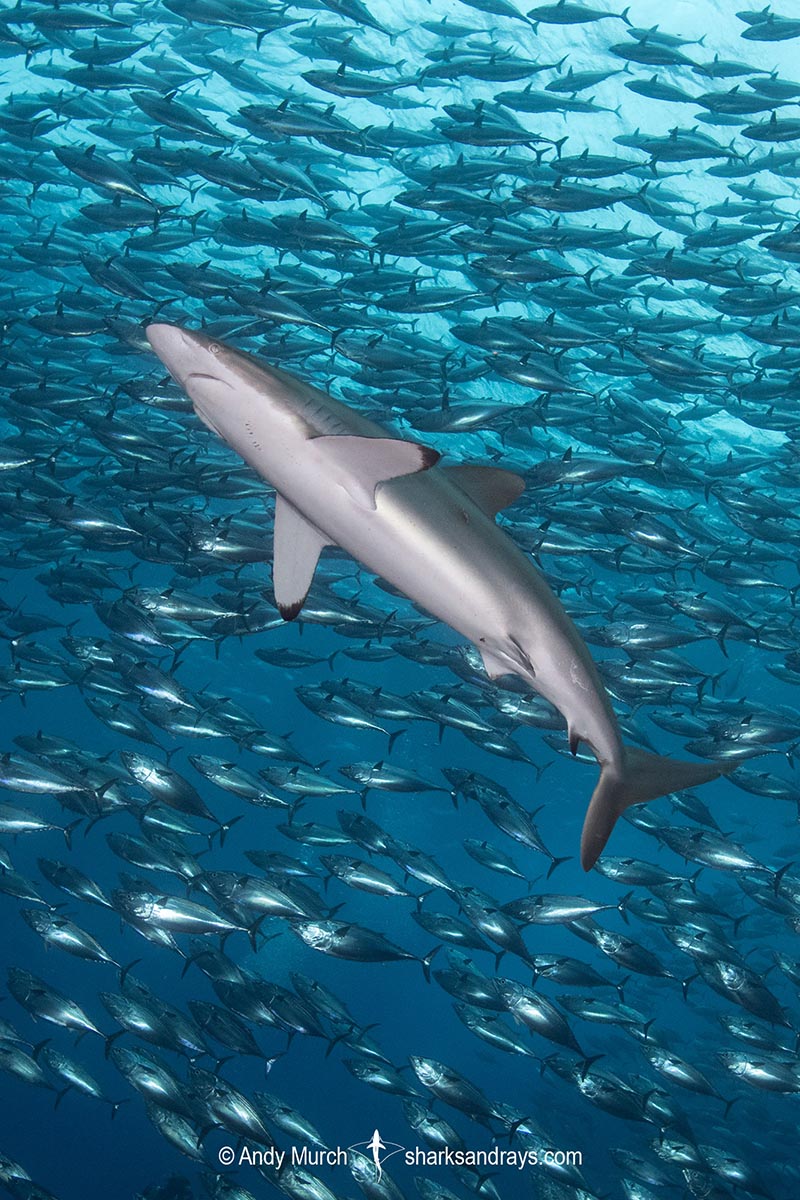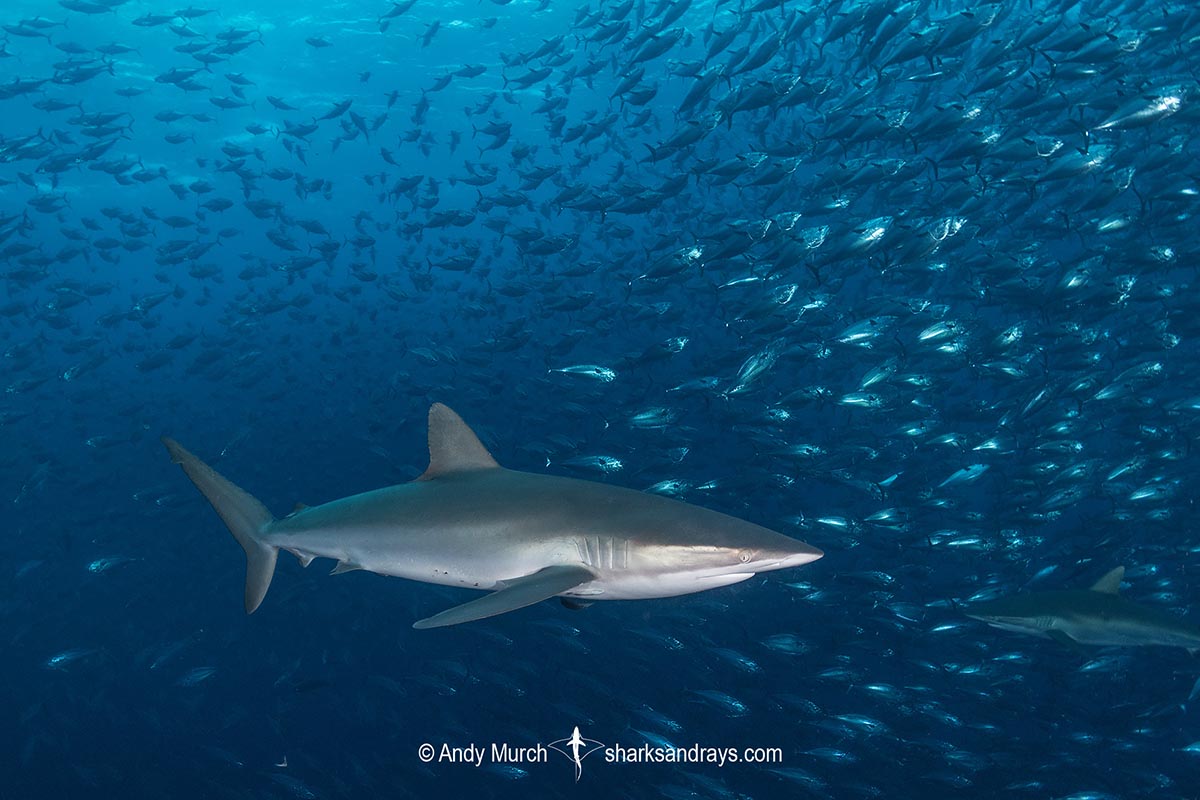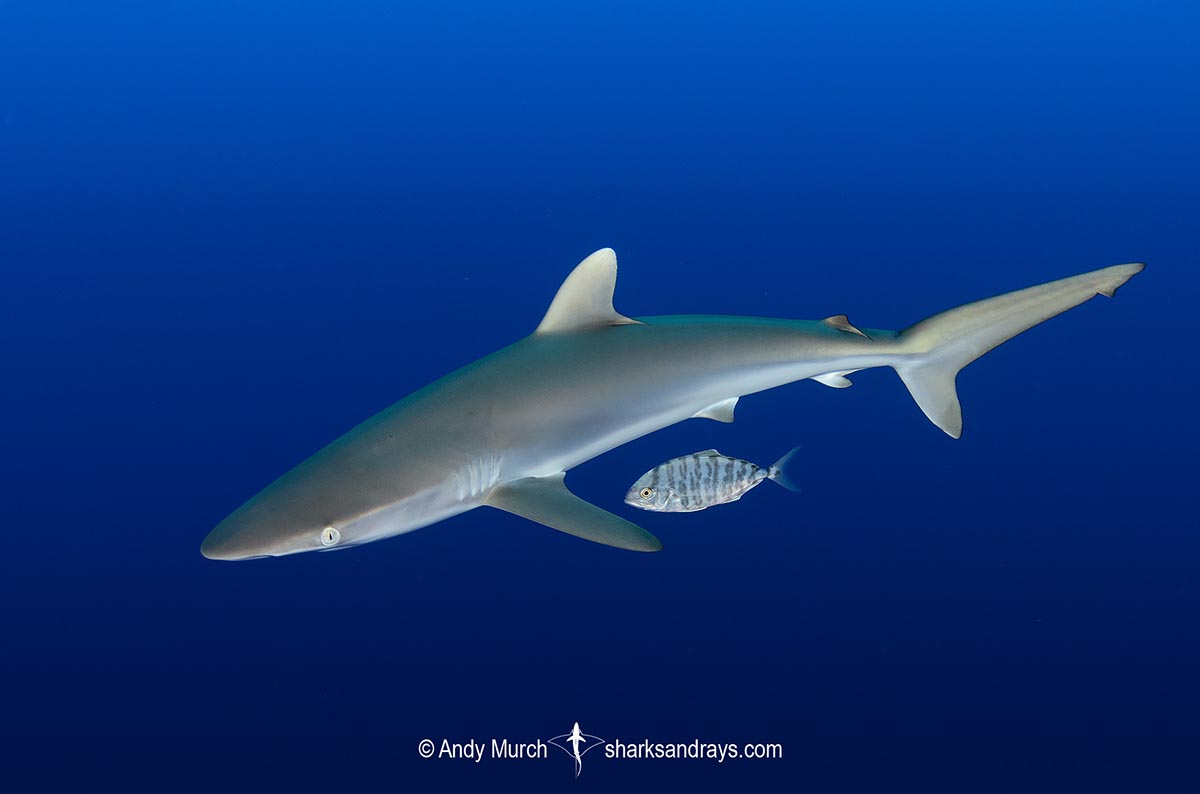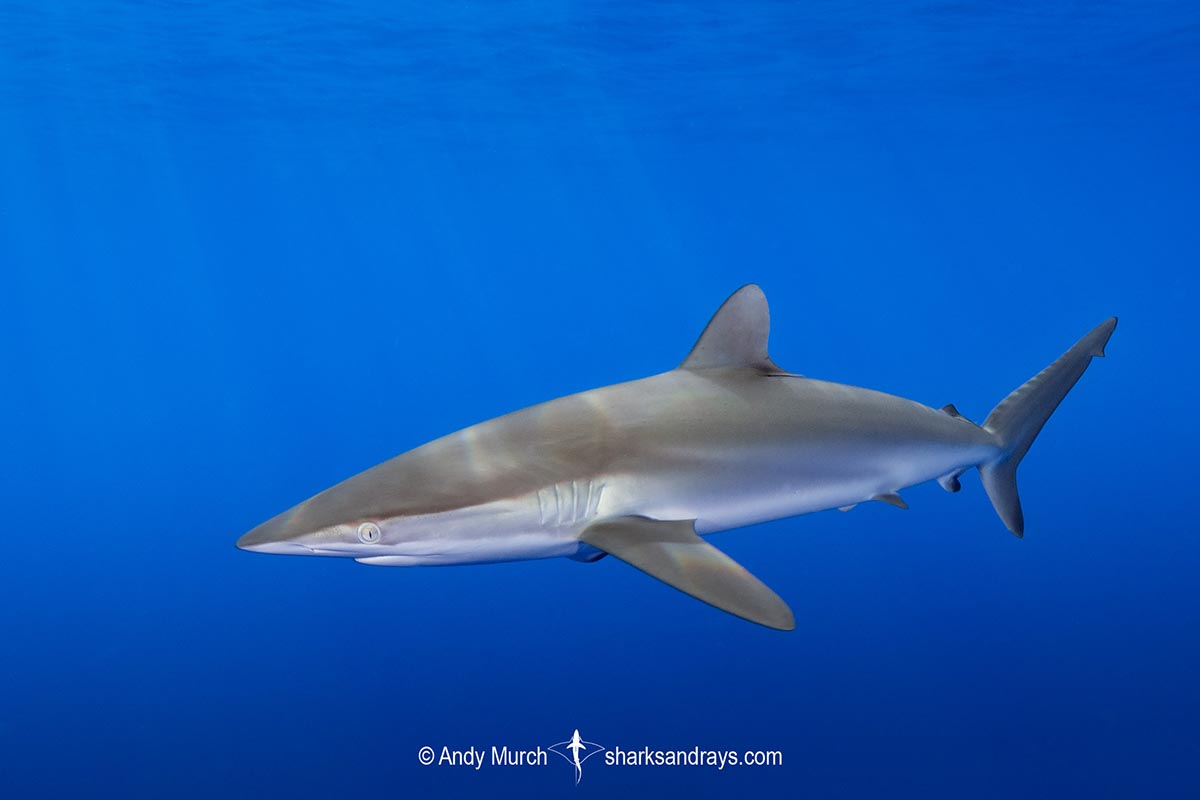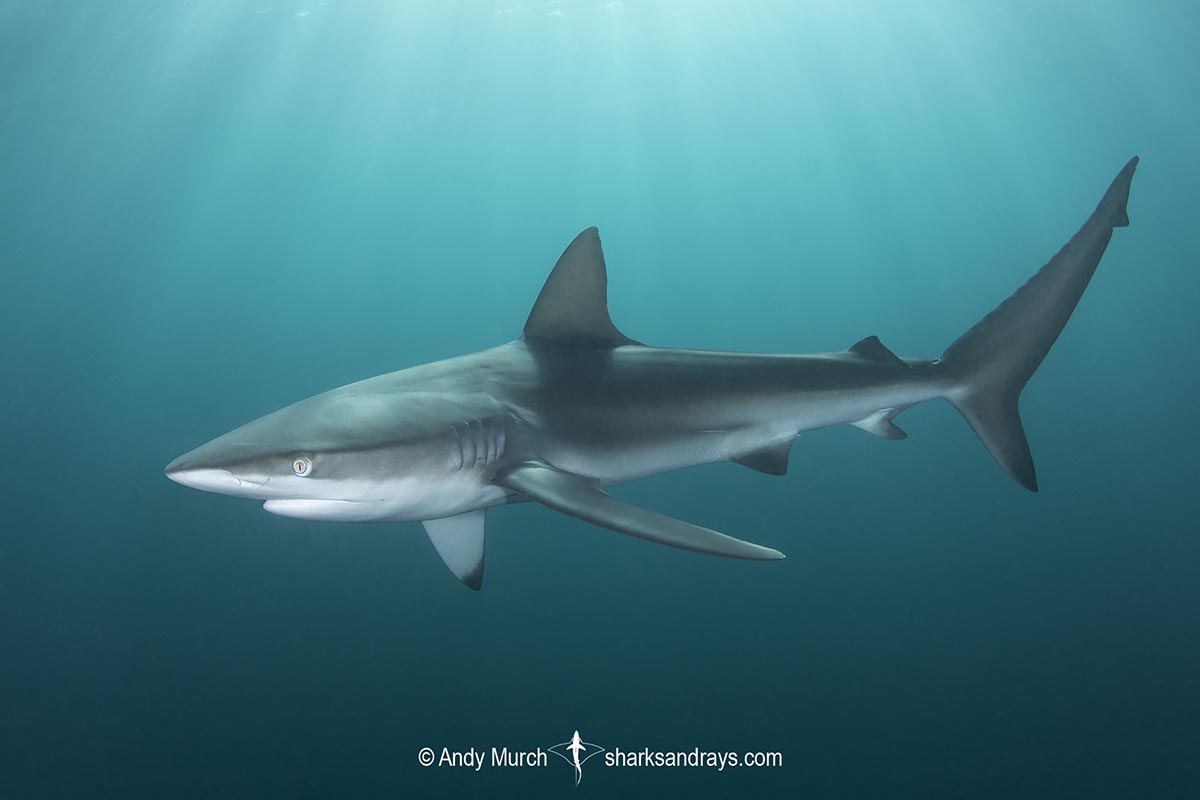Common names
Silky Shark.
Binomial
Carcharhinus falciformis.
Synonyms
Aprionodon sitankaiensis, Carcharhinus atrodorsus, Carcharhinus falciformes, Carcharhinus floridanus, Carcharhinus floridianus, Carcharhinus menisorrah, Carcharhinus menissorrah, Carcharias falciformis, Carcharias falcipinnis, Carcharias menisorrah, Carcharias pharaonis, Carcharins menisorrah, Carcharius falcipinnis, Carcharius menisorrah, Eulamia malpeloensis, Eulamia menisorrah, Gymnorhinus pharaonis, Prionodon tiburo, Squalus tiburo.
Identification
First dorsal fin relatively low and sloped backwards, with somewhat rounded apex. First dorsal origin slightly posterior to free rear tip of pectoral fin. Interdorsal ridge present. Second dorsal low with long free rear tip. Pectoral fins relatively long. Dorsal coloration brown/bronze, often with a silky sheen. Fins may have dusky tips.
Size
Maximum length 330cm. Males mature at 187-217cm. Females mature at 213-230. Size at birth 70-87cm.
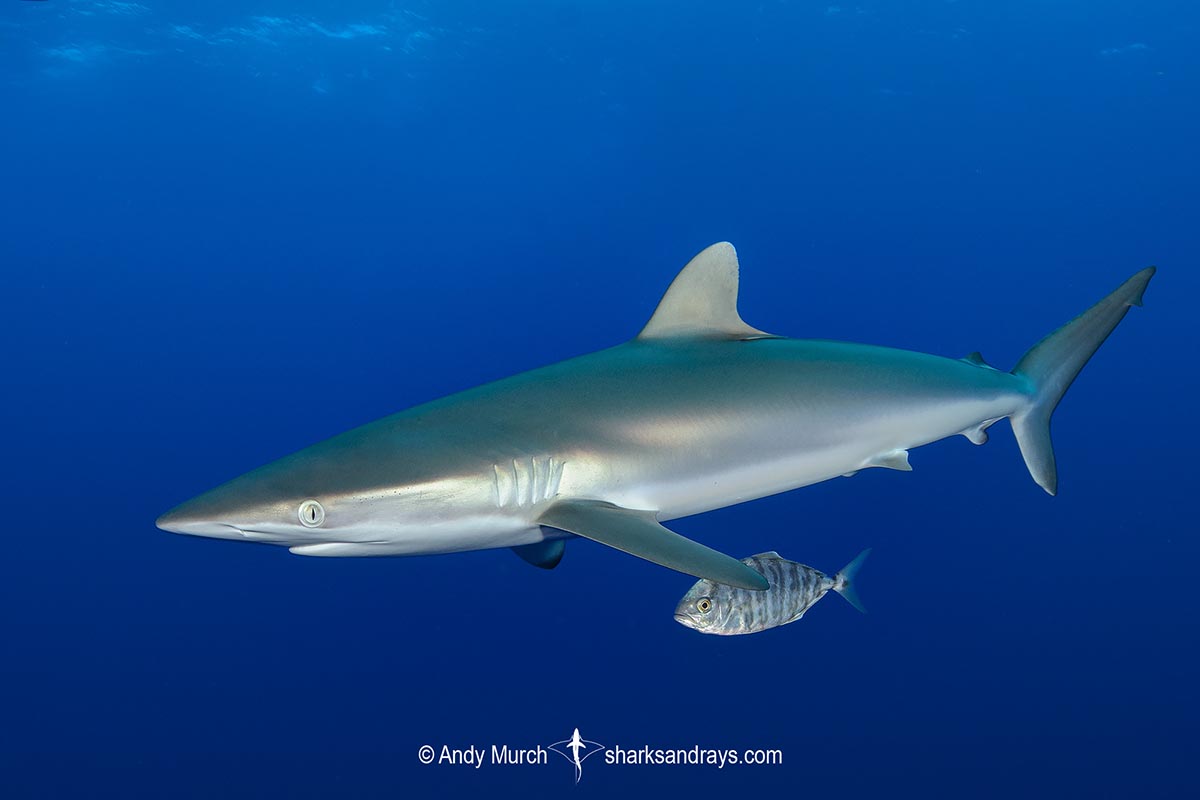
Conservation Status
VULNERABLE
The Silky Shark are one of the three most traded shark species in the global shark fin trade. They are caught in great numbers in targeted fisheries and as bycatch in tuna longline and purse seine fisheries. It is estimated that silky sharks have declined by 47-54% over the last three generations.
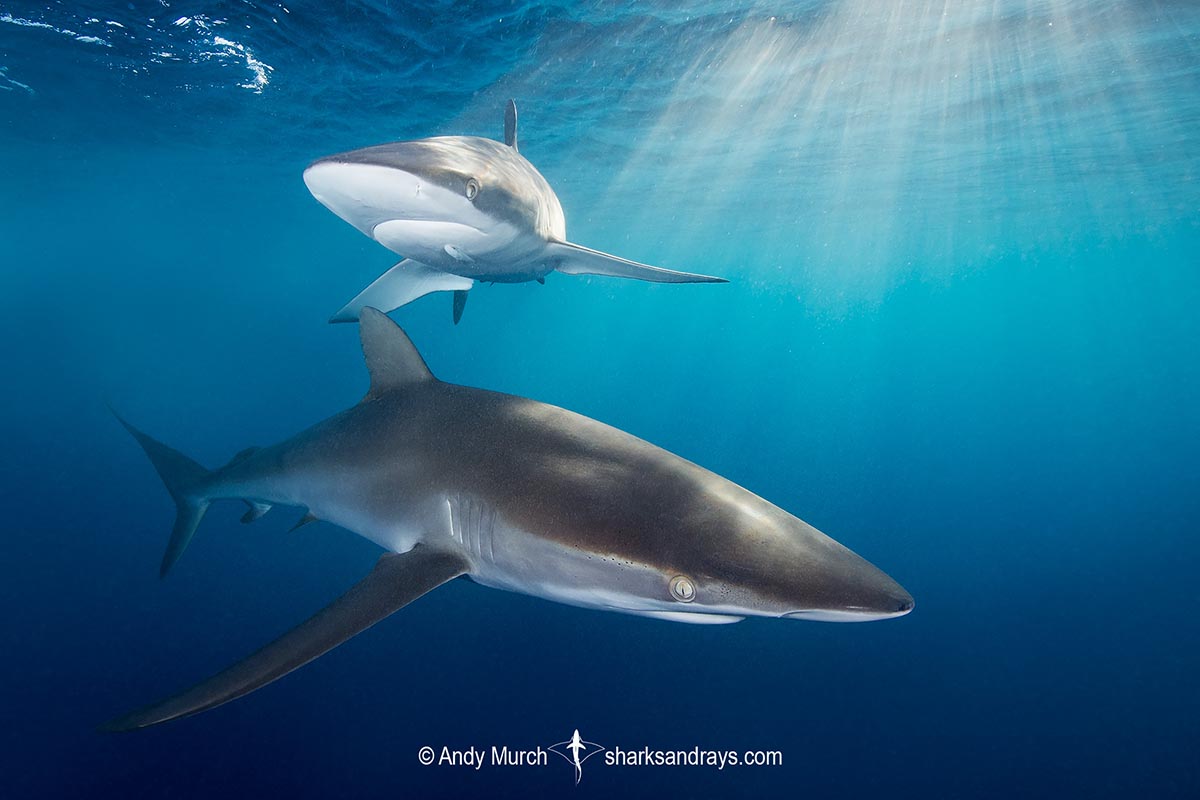
Habitat
A tropical, surface dwelling species mostly found over deep clear water along the continental shelf and even further afield in the centre of the ‘marine deserts’. Silkies also enter shallow bays. Found from the surface to at least 500m.
Distribution
One of the most abundant and cosmopolitan shark species in the tropics. The silky shark is found off of virtually every coastline that falls within this shark’s temperature preference. Although it is more common closer to continental shelves, it is also found thousands of miles from shore, throughout the tropical Pacific.
Reproduction
A viviparous species with yolk-sac placenta. 2-18 pups per litter (Clarke et al. 2015). Gestation approximately 12 months.
Diet
Diet consists mainly of bony fishes such as tuna. The silky shark also preys upon cephalopods and pelagic crabs.
Behavior
Silky sharks are ocean wanderers. They are often seen following schools of tuna. Silkies segregate by size. Juveniles may be found inshore or under floating objects in the deep ocean.
They are known to perform agonistic threat displays towards divers with lowered pectoral fins and arched back. They have also been recorded swimming flank-to-flank while, gaping their jaws, and puffing out their gills. This is likely an attempt to demonstrate their size-dominance.
Reaction to divers
Can be shy but often inquisitive around scuba divers, making close passes. As with oceanic whitetips, their instinct to investigate any object in the water is an important trait for a species that lives in the marine desert far from shore.
Diving logistics
Silky sharks can be seen along virtually any tropical coastline with access to deep water. They are particularly abundant at many offshore tropical islands.
In the eastern Pacific, the Revillagigedo Archipelago (Socorro), Cocos Island, Malpelo, and the northern Galapagos are all good places to see them. Interestingly, although you are fairly certain to see a few down on the reefs, you are likely to see them in greater numbers by chumming at the surface. Or if chumming isn’t permitted, thrashing around and fin slapping; imitating an animal in distress is sure to attract their attention.
North of Socorro in Cabo San Lucas, there are organized shark feeds (usually aimed a blues and makos) that attract silkies during the warmer months. These are snorkeling encounters but silkies prefer the surface layer anyway, so the photographic opportunities are excellent.
In the Bahamas, small to medium sized silkies are common at chummed shark dives or snorkels over deep water.
There is a large navy buoy tethered off of the southeast coast Andros where silkies congregate in fairly large numbers.
At Cat Island, Big Fish Expeditions arranges trips each April to dive with oceanic whitetip sharks. Silkies are the second most common species at those chummed dives.
Cuba’s Jardin de la Reina is also a good spot to photograph silky sharks.
What’s new
View our full list of updates
Similar species
Dusky Shark Distinguished by origin of first dorsal fin, positioned over (or slightly anterior to) free rear tip of pectoral fin.

